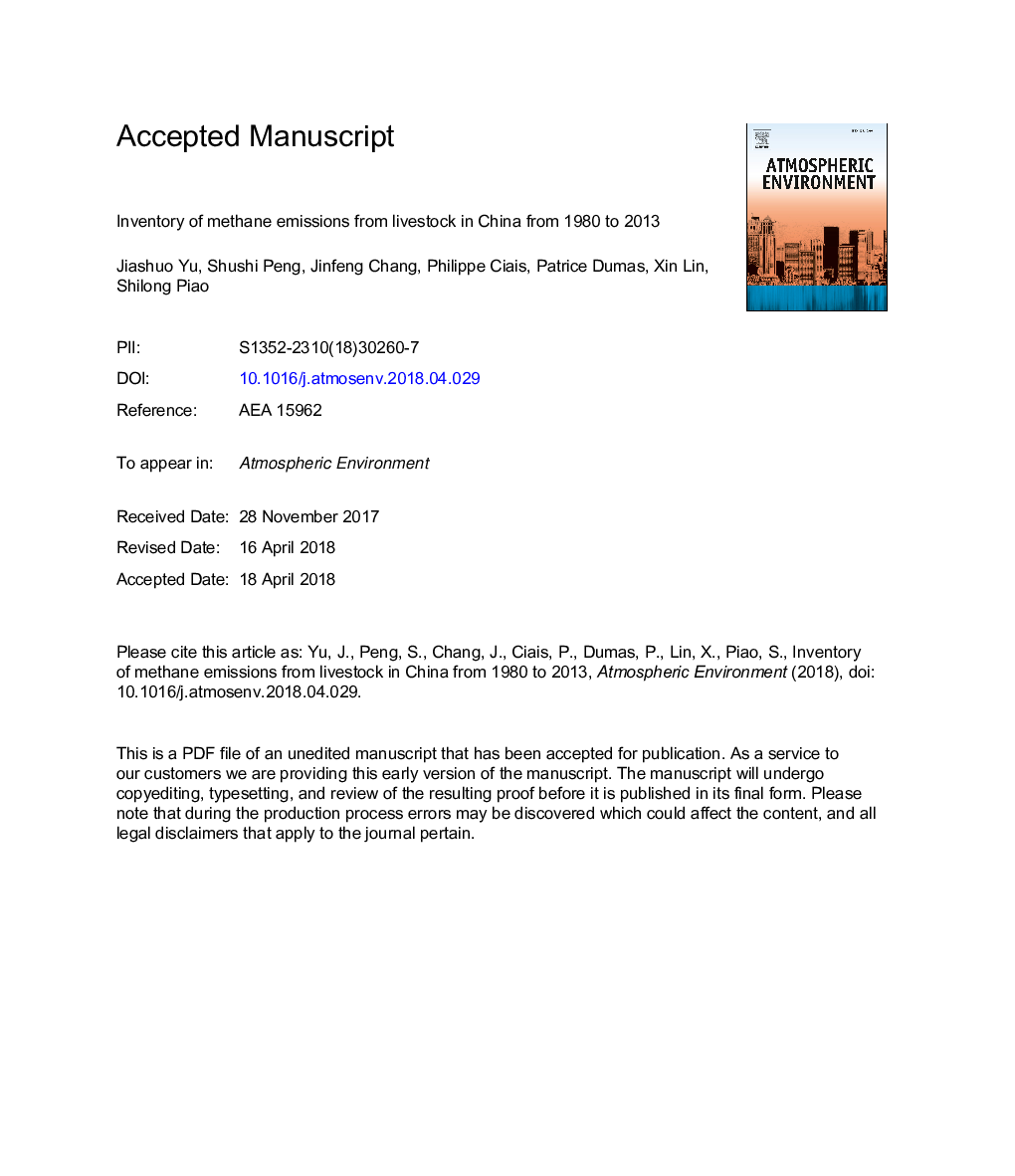| Article ID | Journal | Published Year | Pages | File Type |
|---|---|---|---|---|
| 8863767 | Atmospheric Environment | 2018 | 31 Pages |
Abstract
Livestock is the largest anthropogenic methane (CH4) source at the global scale. Previous inventories of this source for China were based on the accounting of livestock populations and constant emission factors (EFs) per head. Here, we re-evaluate how livestock CH4 emissions have changed from China over the last three decades, considering increasing population, body weight and milk production per head which cause EF to change with time, and decreasing average life span (ALS) of livestock. Our results show that annual CH4 emissions by livestock have increased from 4.5 to 11.8â¯Tg CH4 yrâ1 over the period 1980-2013. The increasing trend in emissions (0.25â¯Tg CH4 yrâ2) over this period is â¼12% larger than that if using constant EFs and ALS. The increasing livestock population, production per head and decreasing ALS contributed +91%, +28% and â19% to the increase in CH4 emissions from livestock, respectively. This implies that the temporal changes in EF and ALS of livestock cannot be overlooked in inventories, especially in countries like China where livestock production systems are experiencing rapid transformations.
Related Topics
Physical Sciences and Engineering
Earth and Planetary Sciences
Atmospheric Science
Authors
Jiashuo Yu, Shushi Peng, Jinfeng Chang, Philippe Ciais, Patrice Dumas, Xin Lin, Shilong Piao,
